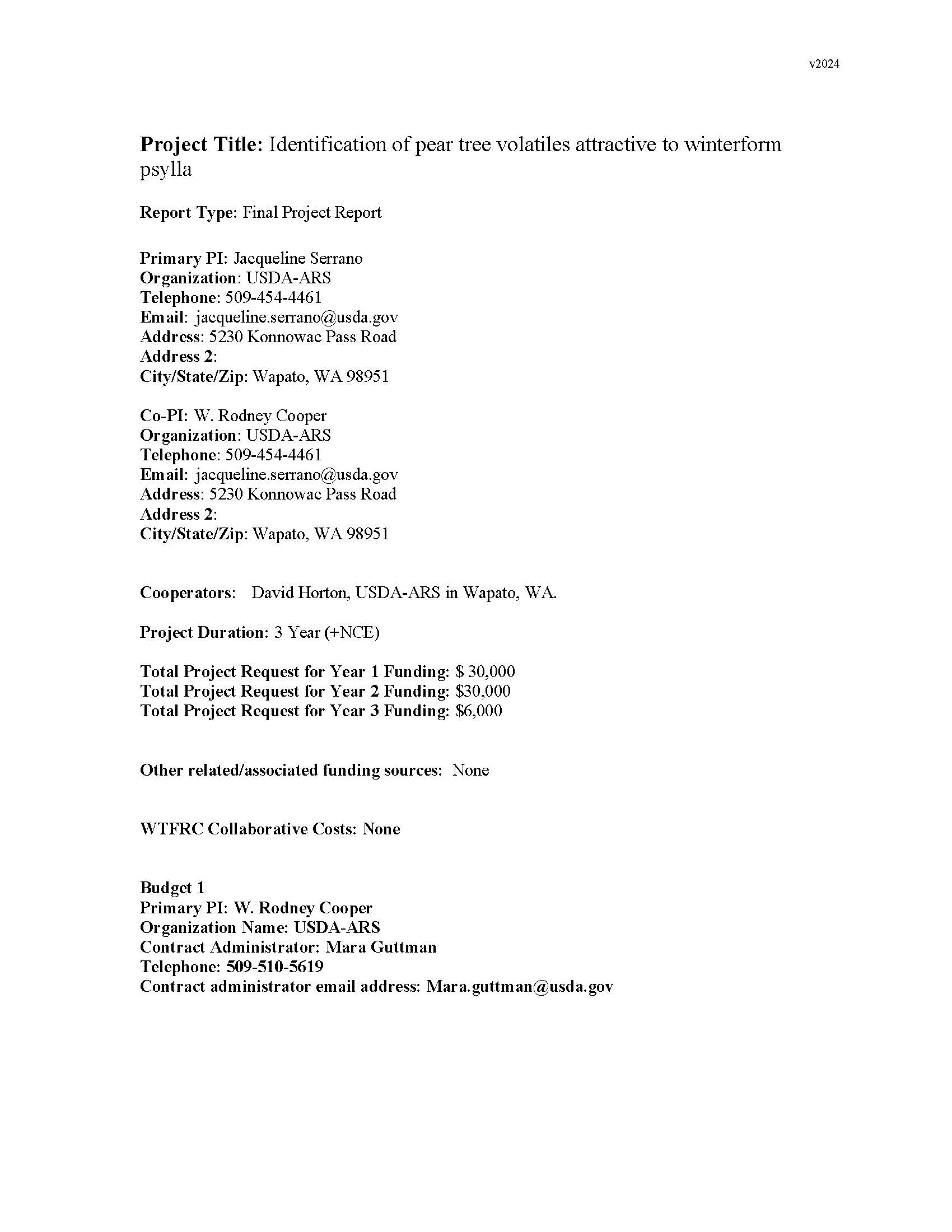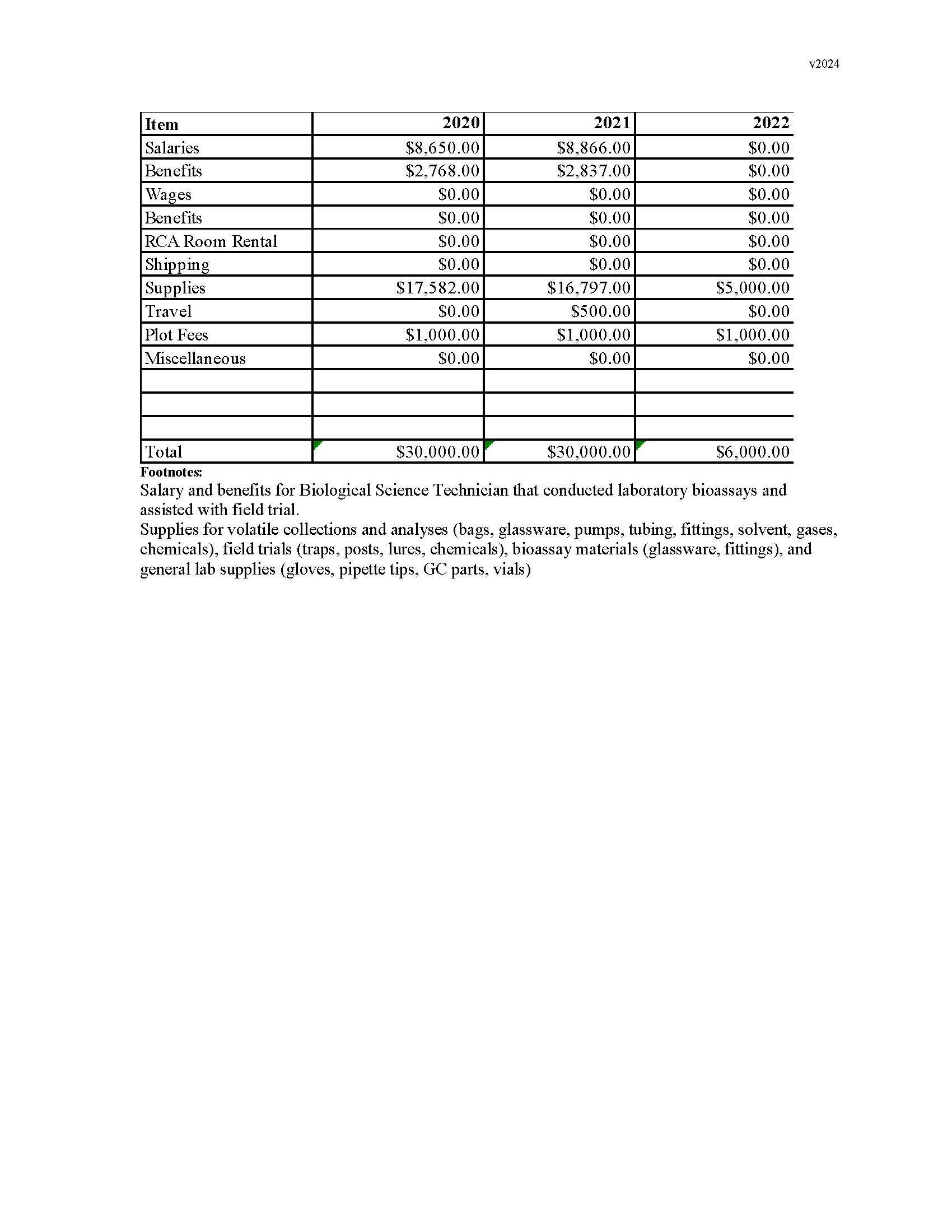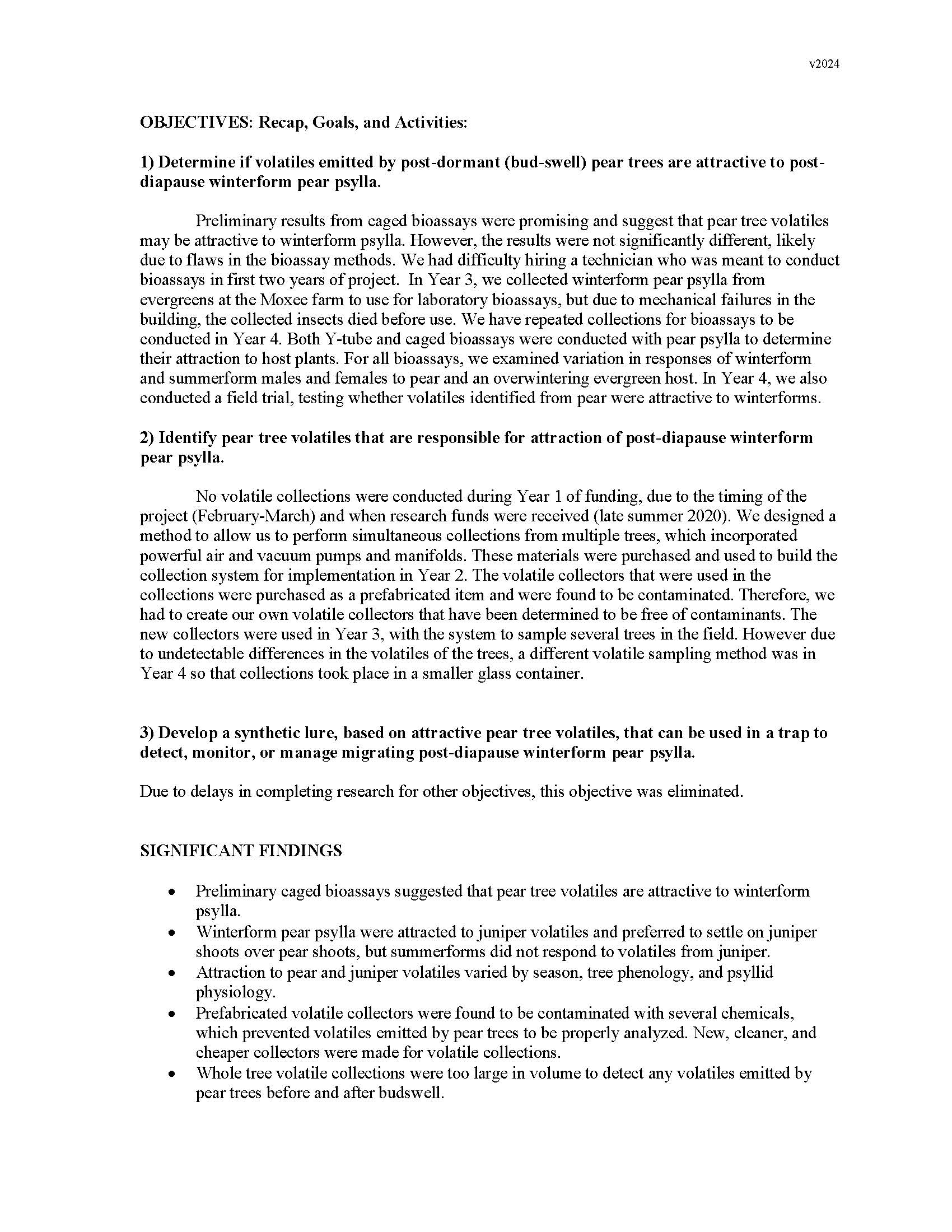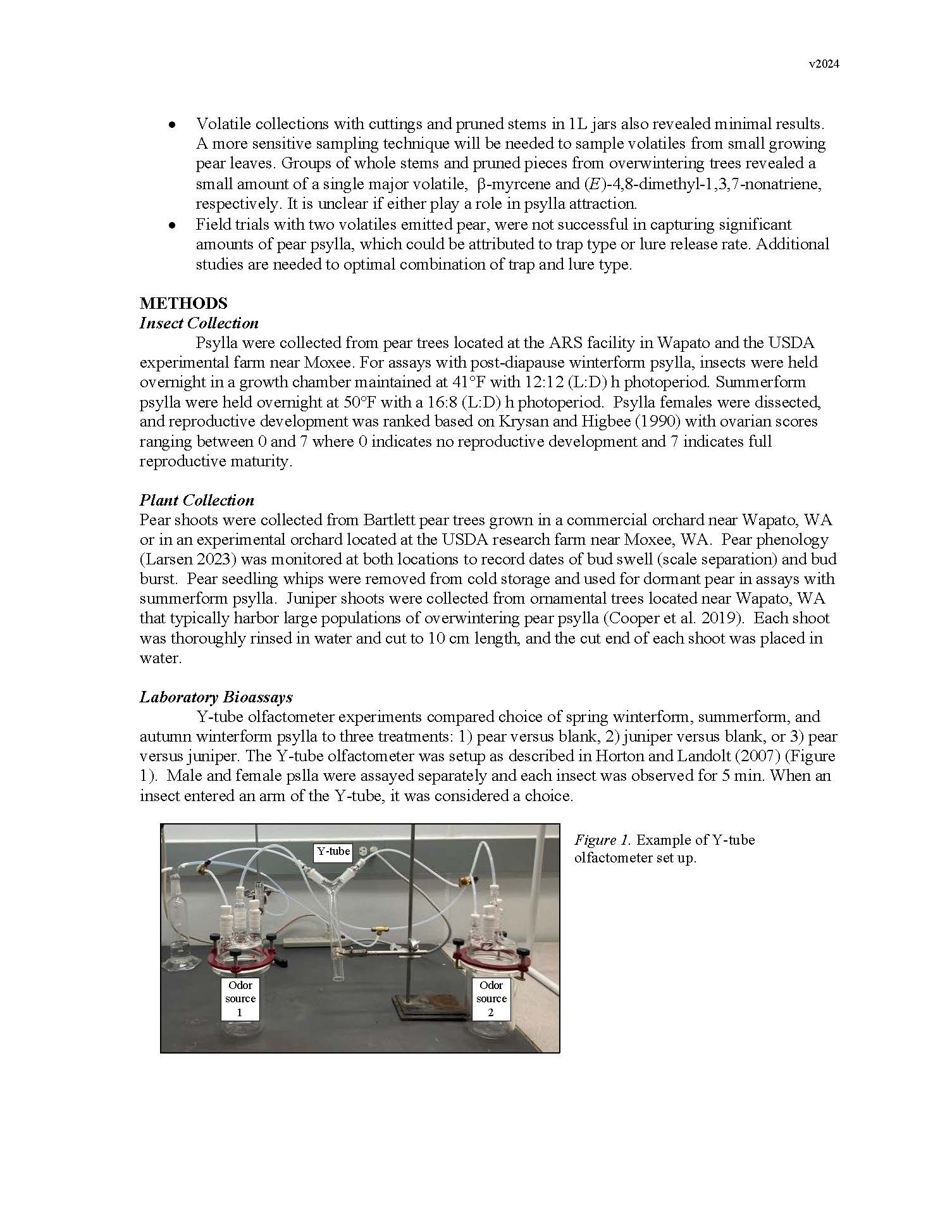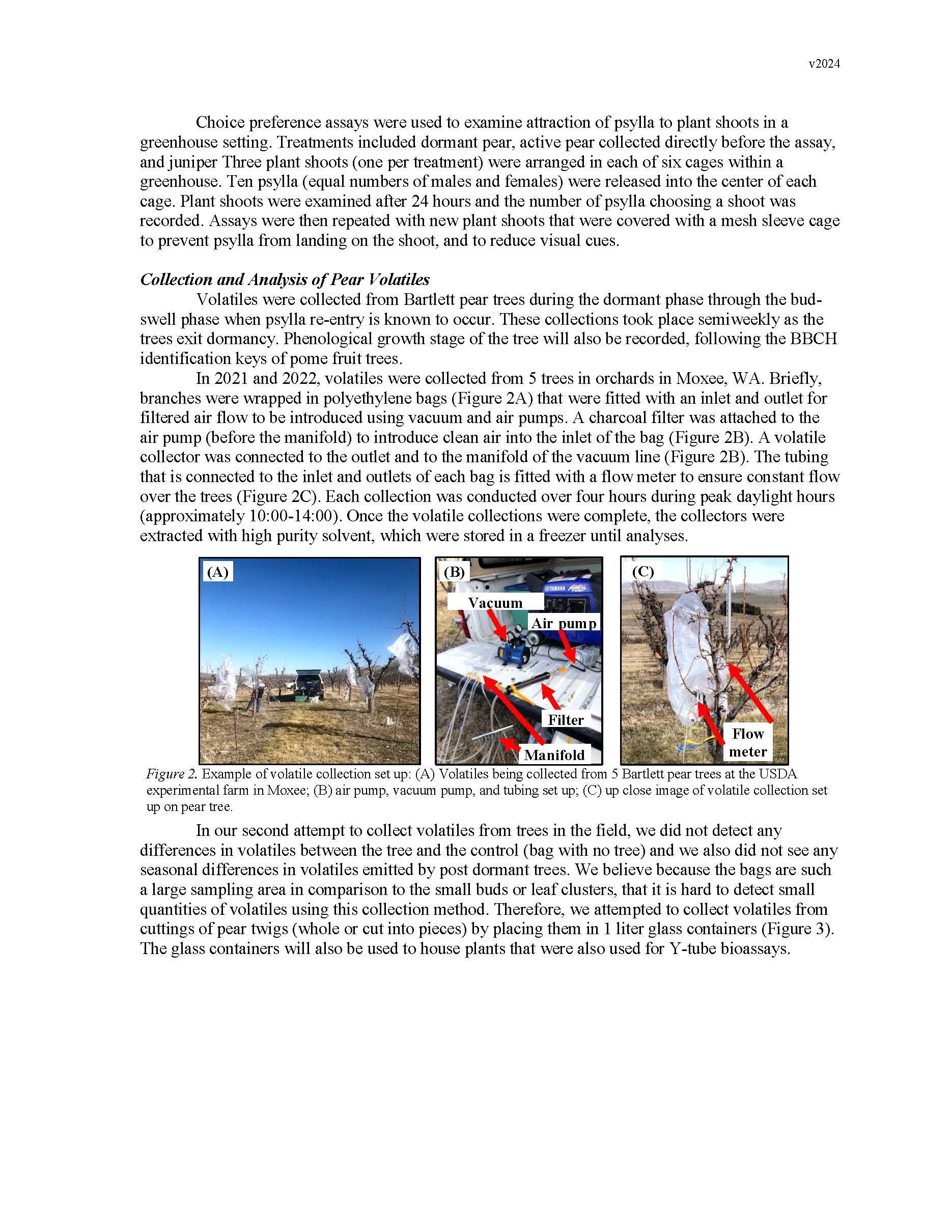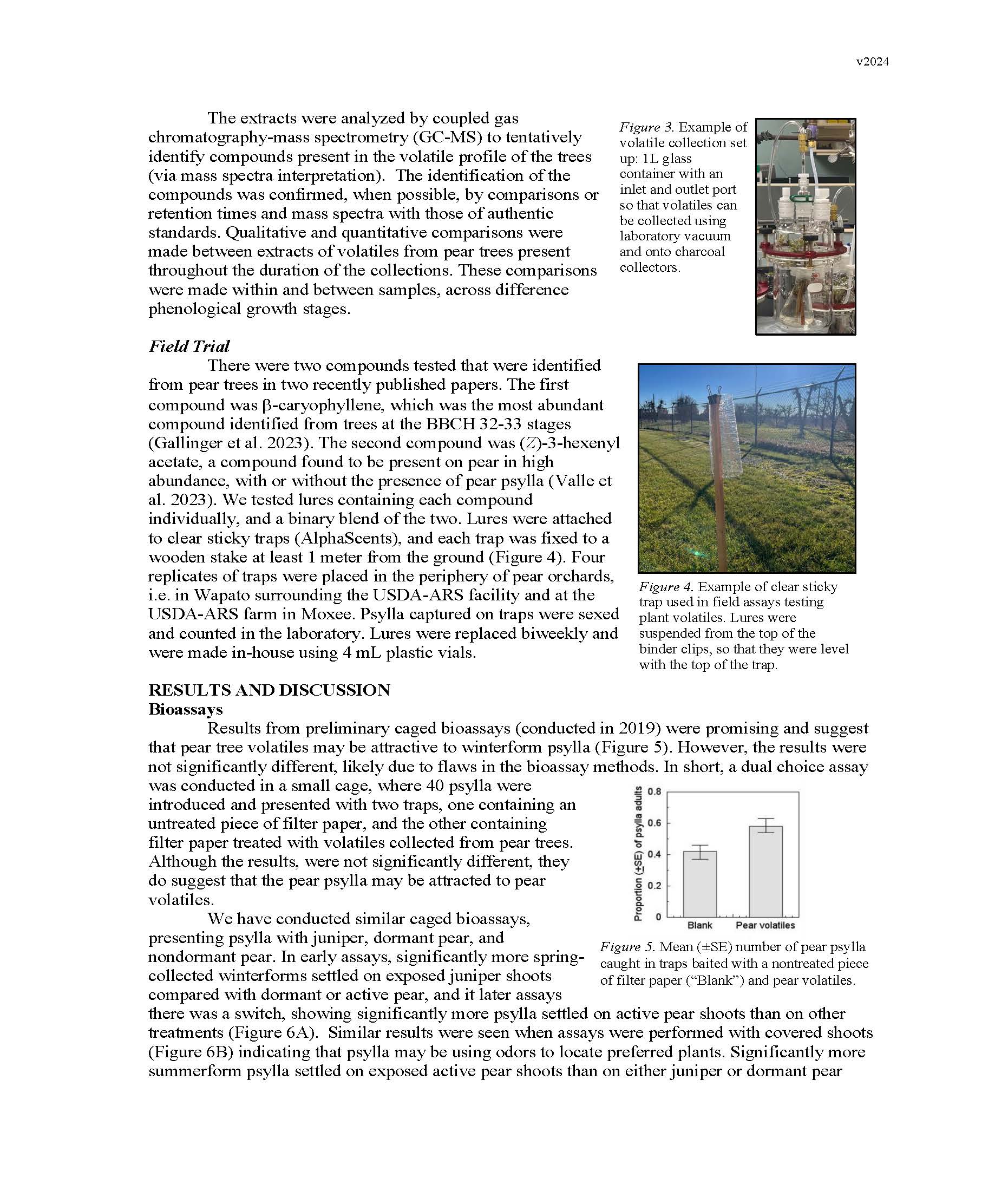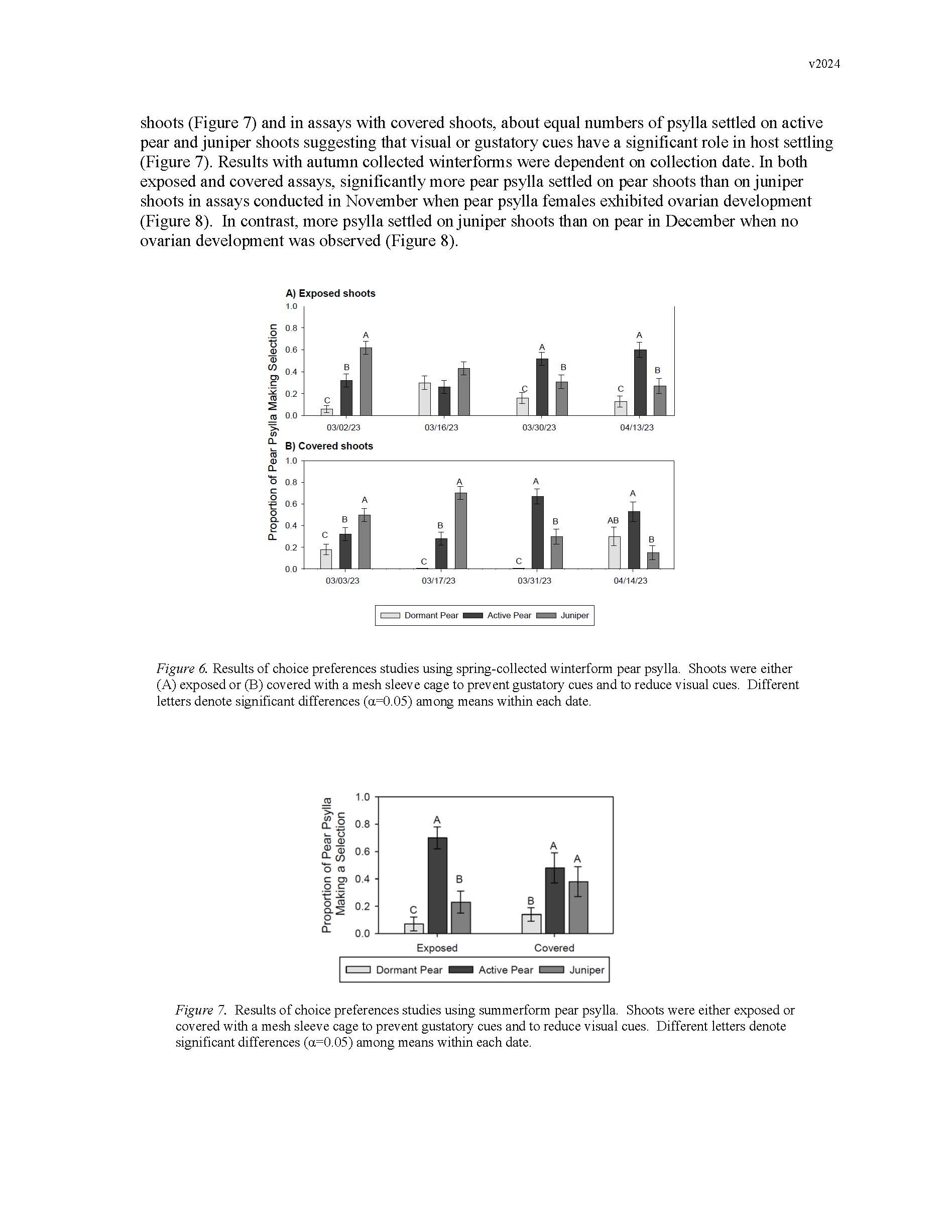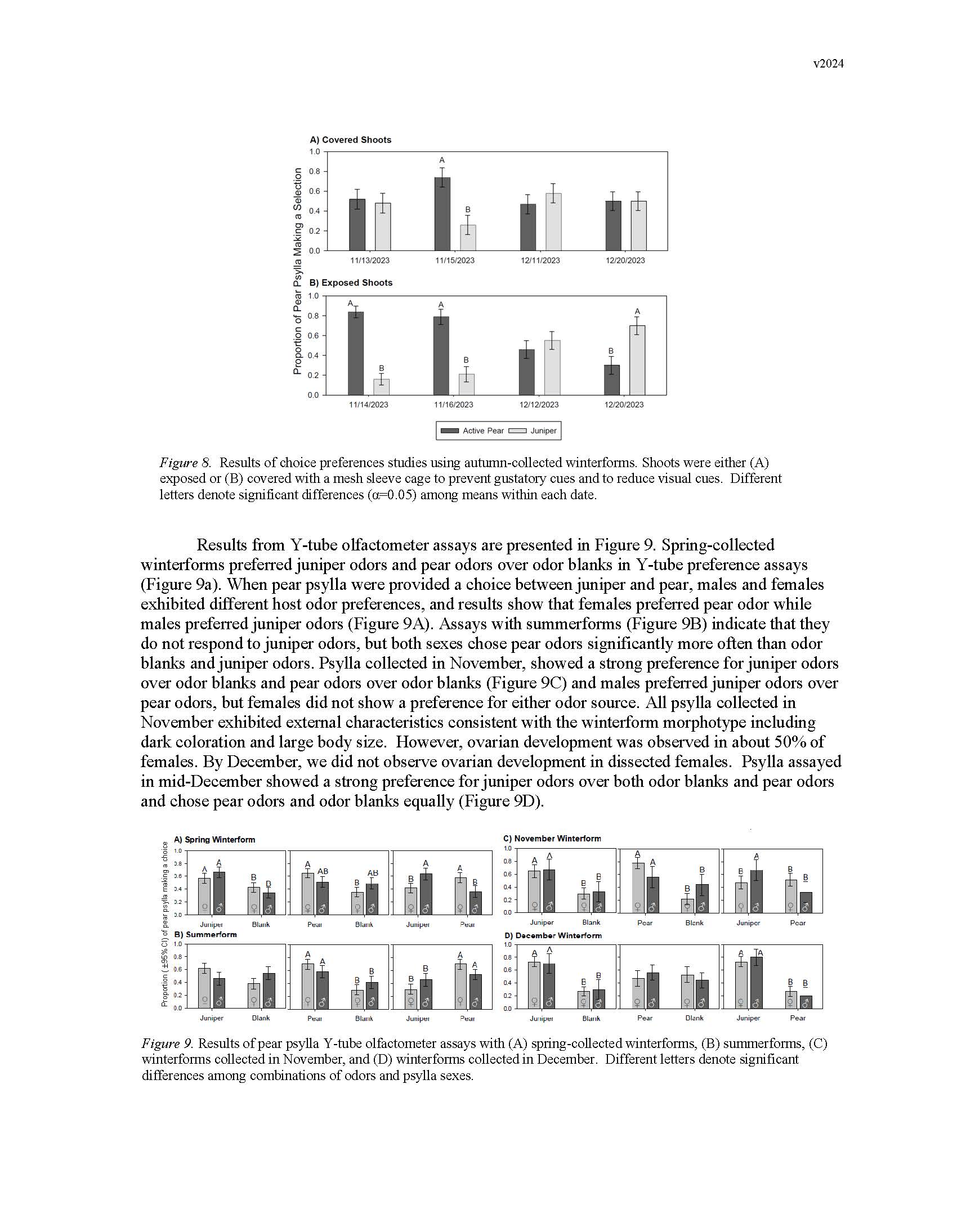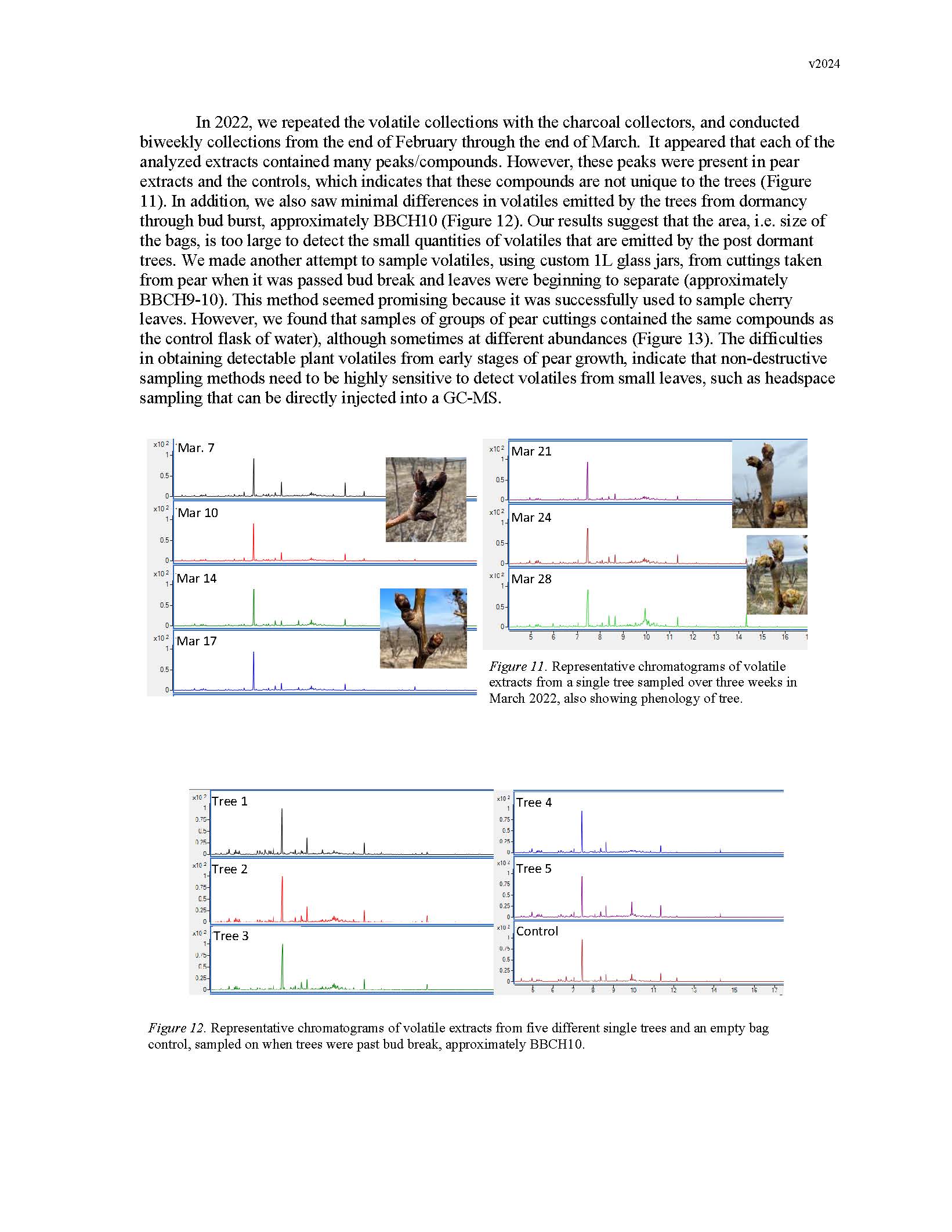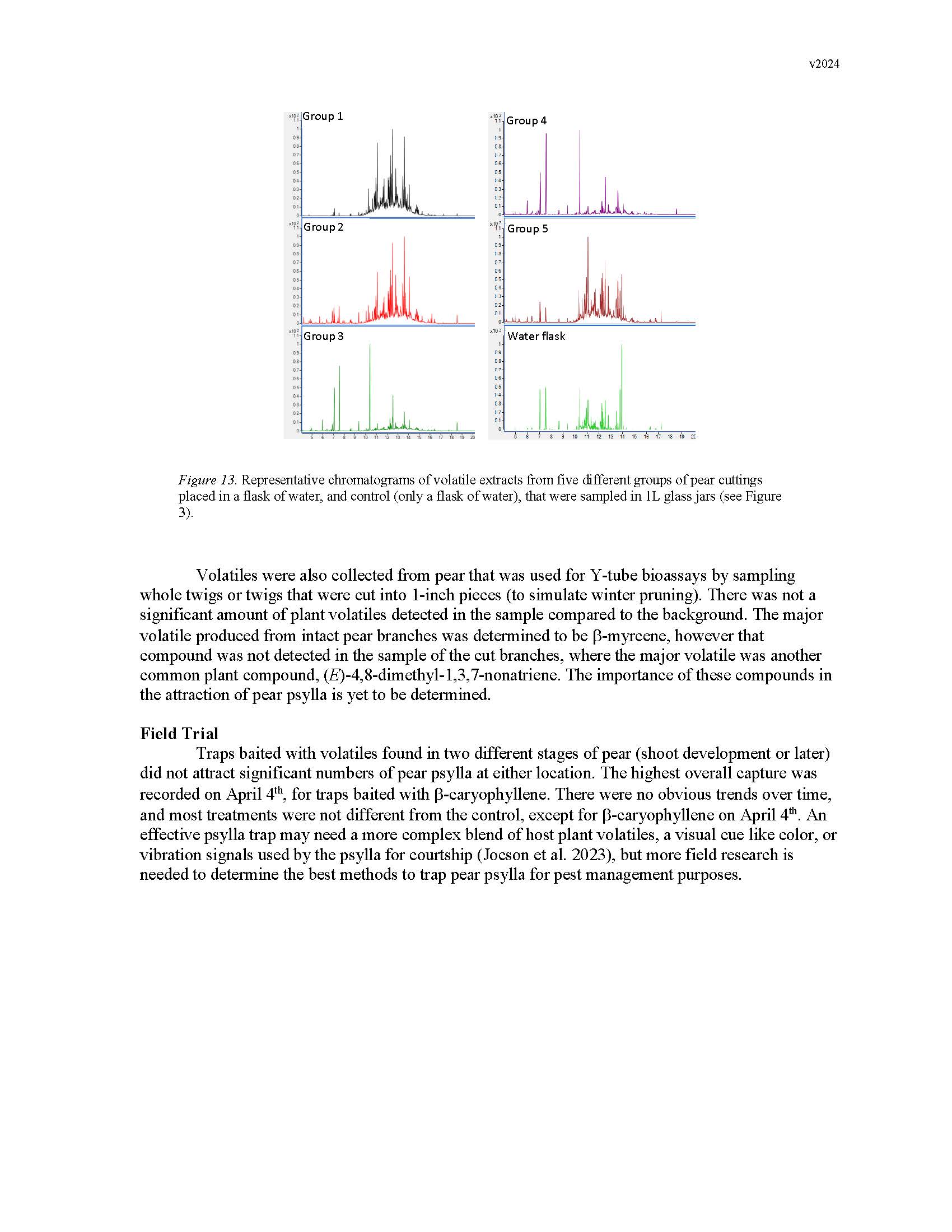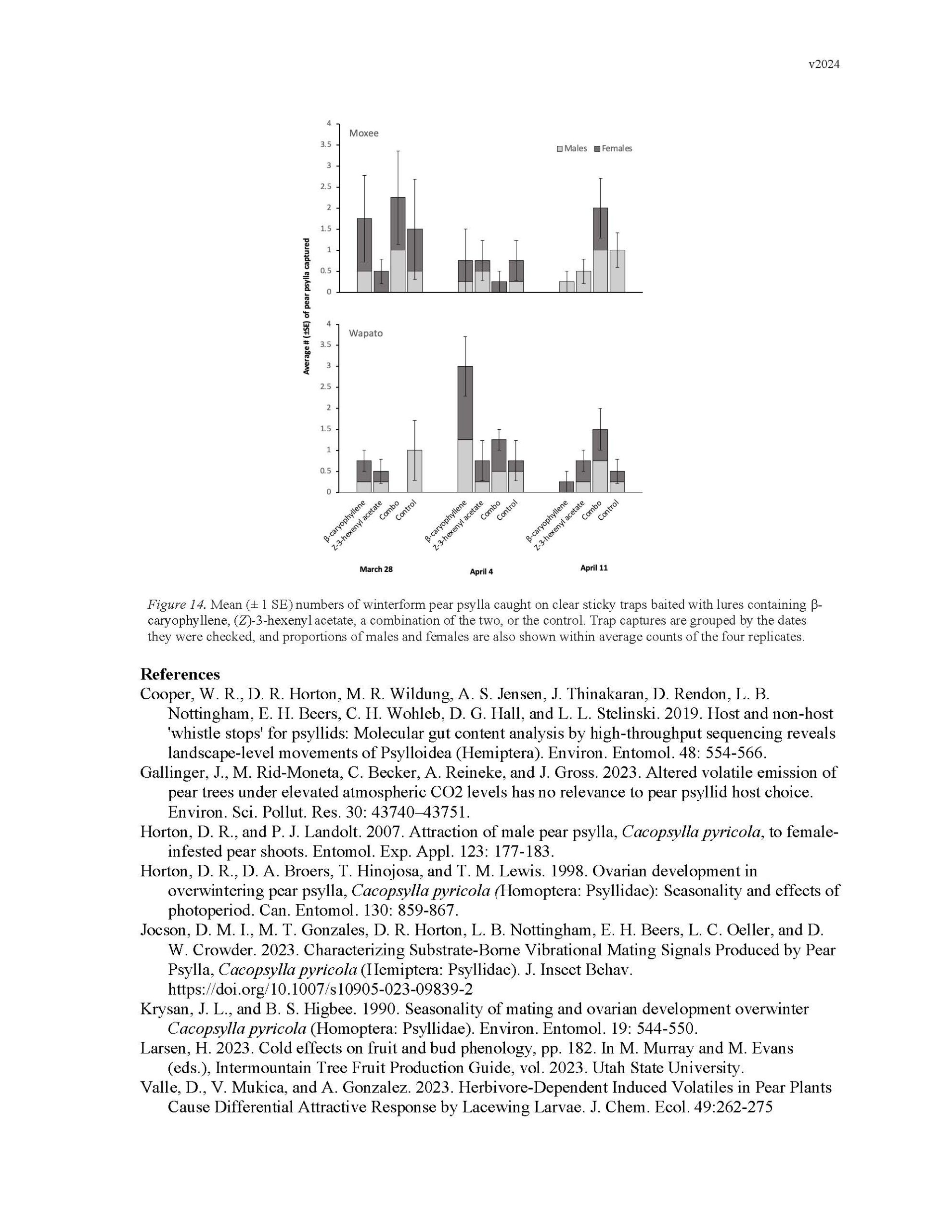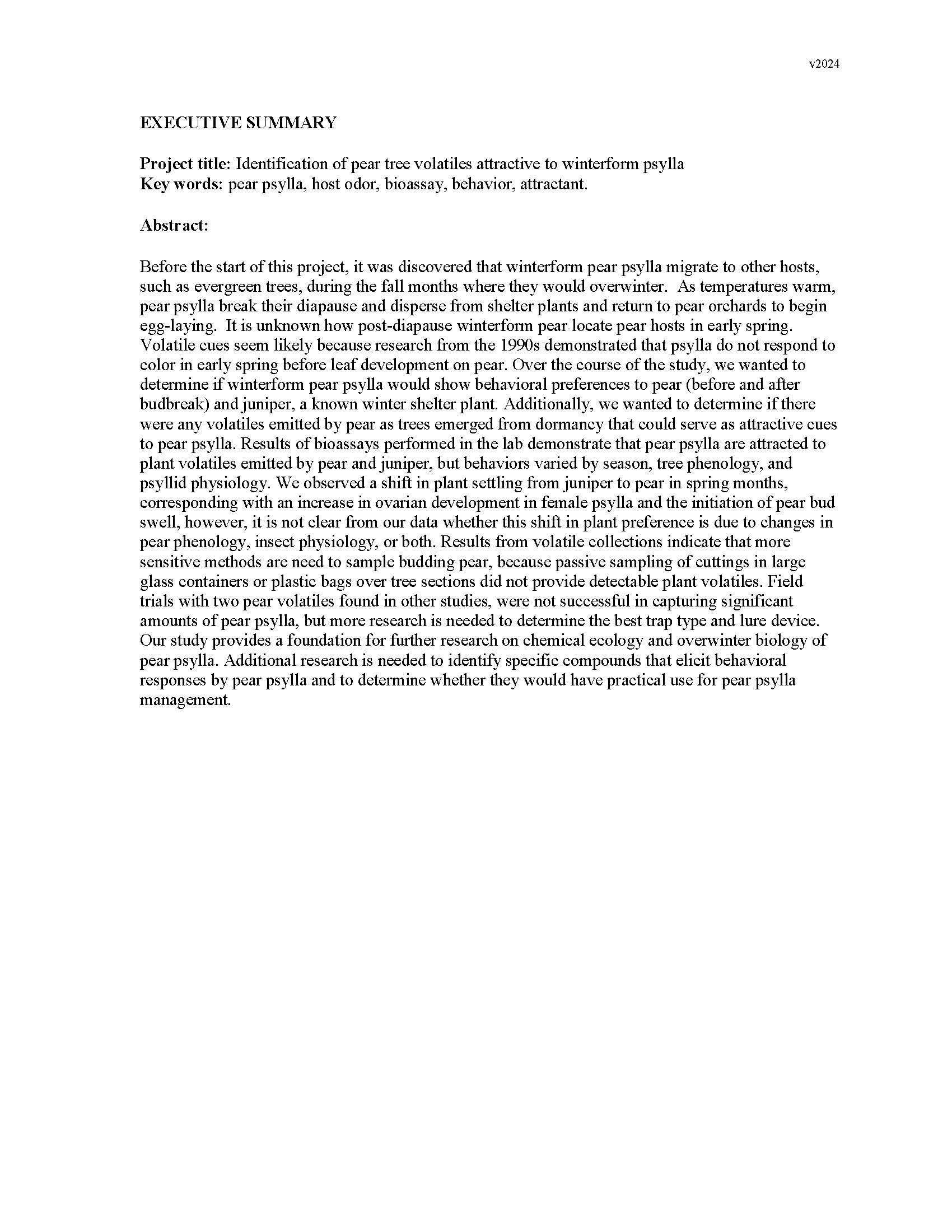Identification of pear tree volatiles attractive to winterform psylla
Author: Jacqueline Serrano
Published: 2024
Summary: Before the start of this project, it was discovered that winterform pear psylla migrate to other hosts, such as evergreen trees, during the fall months where they would overwinter. As temperatures warm, pear psylla break their diapause and disperse from shelter plants and return to pear orchards to begin egg-laying. It is unknown how post-diapause winterform pear locate pear hosts in early spring. Volatile cues seem likely because research from the 1990s demonstrated that psylla do not respond to color in early spring before leaf development on pear. Over the course of the study, we wanted to determine if winterform pear psylla would show behavioral preferences to pear (before and after budbreak) and juniper, a known winter shelter plant. Additionally, we wanted to determine if there were any volatiles emitted by pear as trees emerged from dormancy that could serve as attractive cues to pear psylla. Results of bioassays performed in the lab demonstrate that pear psylla are attracted to plant volatiles emitted by pear and juniper, but behaviors varied by season, tree phenology, and psyllid physiology. We observed a shift in plant settling from juniper to pear in spring months, corresponding with an increase in ovarian development in female psylla and the initiation of pear bud swell, however, it is not clear from our data whether this shift in plant preference is due to changes in pear phenology, insect physiology, or both. Results from volatile collections indicate that more sensitive methods are need to sample budding pear, because passive sampling of cuttings in large glass containers or plastic bags over tree sections did not provide detectable plant volatiles. Field trials with two pear volatiles found in other studies, were not successful in capturing significant amounts of pear psylla, but more research is needed to determine the best trap type and lure device. Our study provides a foundation for further research on chemical ecology and overwinter biology of pear psylla. Additional research is needed to identify specific compounds that elicit behavioral responses by pear psylla and to determine whether they would have practical use for pear psylla management. Key words: pear psylla, host odor, bioassay, behavior, attractant
Keywords:

